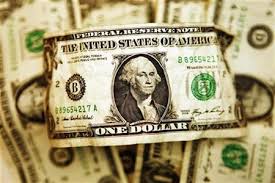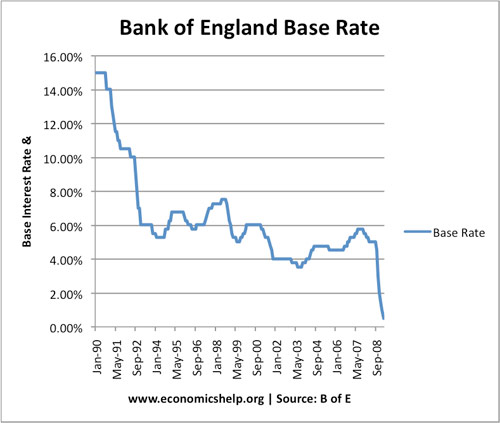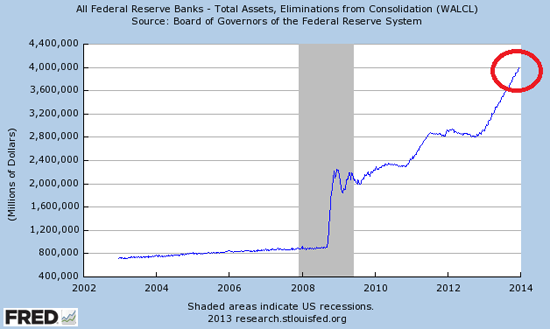
One of the key meetings of the US Federal Reserve came to an end yesterday, the FOMC, and it was particularly notable because it was chairman (or more correctly Chairwoman) Janet Yellen’s first meeting.
There were no surprises that the Fed’s asset purchase programme would continue to be tapered with a further $10 billion cut to $55 billion a month from April. The US central ban also said it would stop using unemployment as a target to set interest rate, a break with the policy under former chairman Ben Bernanke. The former policy since 2011 had a target of increasing interest rates only once unemployment falls below 6.5 percent.
The shock came regarding the timetable for a rise in rates when it became clear that US interest rates would probably start rising in early 2015. During the post meeting press conference Yellen said the Federal Reserve is likely to keep interest rates unchanged for a “considerable time” after it winds up its bond-buying scheme in quarter three 2014 but later clarified this period as around “six months”. However, the tapering of asset purchases was reiterated as not being set in stone, “not on a pre-set course”.
So Yellen managed to do what Putin failed to when he invaded the Crimea– cause a drop in the markets. The S&P 500 dropped nearly 1% at one point during Yellen’s press conference before recovering and closing at 0.6% down yesterday. Rising interest rates in the United States are a further headwind for gold prices which failed to erupt this week despite the Crimea annexation, with the yellow metal falling $10 to $1,331 an ounce. For bond investors there’s plenty to think about with both the UK and American central banks signaling fiscal tightening after 5 years of ultra low interest rates. Intermediate maturity Treasury yields rose as bonds were sold off, with the yield on the 5 year US Treasury note dropping 0.29%.

With interest rates moving up in 2015-2016 across much of the developed world I am largely steering clear of government and corporate bonds with the exception of index linked products. We really are coming to an end of an era, with mortgage costs for UK households never being so low. I was fortunate to buy a tracker mortgage linked just above the bank of England base rate just as the banking system collapsed in 2008 and benefitted from my mortgage halving during the financial crisis as rates came down from 5% to 0.5%. I worry how many households have got used to this era or cheap property lending and have borrowed way above their means with house prices booming across the country and particularly in London.
But a reality check is needed before fears of a rapid rise in interest rates takes hold. With inflation relatively benign in the UK, mainland Europe and the United States, and the European Central Bank more worried about deflation, central banks are unlikely to drive interest rates significantly higher in the next couple of years. We’re not going back to the 1970’s-1980’s with double digit rates.
But these near zero rates will soon be a thing of the past and that is good news for savers as opposed to borrowers who are seeing negative rates of return on their savings accounts. I still remember, September 1992, so called “Black Wednesday” when the UK Treasury spent £2 billion an hour and raised interest rates to 12% to try and keep us in the ERM (exchange rate mechanism) and ultimately failed meaning that George Soros famously made £1 billion betting against the pound and its continued presence in the ERM. The ERM meant that currencies stayed within a band set in relation to other currencies in the scheme. To maintain the currency values relative to each other, countries with the most valuable currencies had to sell their own and buy the weakest. In September 1992 the Deutschmark was the most powerful currency and Sterling the weakest within its band. Chancellor of the Exchequer Norman Lamont resigned having cost the British taxpayer over £3 billion trying to keep Britain in the ERM.
I took out my first mortgage in 1994 when a 5 year fix at the time was 8%, those who bought properties in the 1970’s will remember higher rates still. Many younger borrowers will never have experienced repaying their mortgage at a “normal” rate. Since 2008, we have lived in a unprecedented era of cheap money – low interest rates and central banks aggressively expanding their balance sheets. The Fed has expanded its balance sheet by a factor of four over the past few years as a result of quantitative easing, from a little less than $1 trillion to around $4 trillion today.

With easy money ending, where will the markets head? Cheap money has meant easy returns for investors, it may get a lot tougher for companies in an environment of increasing interest rates in turn hitting corporate earnings. A strong dollar will make exports more expensive for US companies. With the amount of dollar printing by the Fed its been surprising how well the dollar has stood up with its status as a the reserve currency of choice undiminished.
We’ve become addicted to cheap money and the junkie has to have his “cold turkey” one day.
Contrarian Investor UK
IMPORTANT: The posts I make are in no way meant as investment suggestions or recommendations to any visitors to the site. They are simply my views, personal reflections and analysis on the markets. Anyone who wishes to spread bet or buy stocks should rely on their own due diligence and common sense before placing any spread trade.
by contrarianuk
Near zero interest rate era in UK and US coming to an end in 2015?
Mar 20, 2014 at 9:42 am in Market Commentary by contrarianuk
One of the key meetings of the US Federal Reserve came to an end yesterday, the FOMC, and it was particularly notable because it was chairman (or more correctly Chairwoman) Janet Yellen’s first meeting.
There were no surprises that the Fed’s asset purchase programme would continue to be tapered with a further $10 billion cut to $55 billion a month from April. The US central ban also said it would stop using unemployment as a target to set interest rate, a break with the policy under former chairman Ben Bernanke. The former policy since 2011 had a target of increasing interest rates only once unemployment falls below 6.5 percent.
The shock came regarding the timetable for a rise in rates when it became clear that US interest rates would probably start rising in early 2015. During the post meeting press conference Yellen said the Federal Reserve is likely to keep interest rates unchanged for a “considerable time” after it winds up its bond-buying scheme in quarter three 2014 but later clarified this period as around “six months”. However, the tapering of asset purchases was reiterated as not being set in stone, “not on a pre-set course”.
So Yellen managed to do what Putin failed to when he invaded the Crimea– cause a drop in the markets. The S&P 500 dropped nearly 1% at one point during Yellen’s press conference before recovering and closing at 0.6% down yesterday. Rising interest rates in the United States are a further headwind for gold prices which failed to erupt this week despite the Crimea annexation, with the yellow metal falling $10 to $1,331 an ounce. For bond investors there’s plenty to think about with both the UK and American central banks signaling fiscal tightening after 5 years of ultra low interest rates. Intermediate maturity Treasury yields rose as bonds were sold off, with the yield on the 5 year US Treasury note dropping 0.29%.
With interest rates moving up in 2015-2016 across much of the developed world I am largely steering clear of government and corporate bonds with the exception of index linked products. We really are coming to an end of an era, with mortgage costs for UK households never being so low. I was fortunate to buy a tracker mortgage linked just above the bank of England base rate just as the banking system collapsed in 2008 and benefitted from my mortgage halving during the financial crisis as rates came down from 5% to 0.5%. I worry how many households have got used to this era or cheap property lending and have borrowed way above their means with house prices booming across the country and particularly in London.
But a reality check is needed before fears of a rapid rise in interest rates takes hold. With inflation relatively benign in the UK, mainland Europe and the United States, and the European Central Bank more worried about deflation, central banks are unlikely to drive interest rates significantly higher in the next couple of years. We’re not going back to the 1970’s-1980’s with double digit rates.
But these near zero rates will soon be a thing of the past and that is good news for savers as opposed to borrowers who are seeing negative rates of return on their savings accounts. I still remember, September 1992, so called “Black Wednesday” when the UK Treasury spent £2 billion an hour and raised interest rates to 12% to try and keep us in the ERM (exchange rate mechanism) and ultimately failed meaning that George Soros famously made £1 billion betting against the pound and its continued presence in the ERM. The ERM meant that currencies stayed within a band set in relation to other currencies in the scheme. To maintain the currency values relative to each other, countries with the most valuable currencies had to sell their own and buy the weakest. In September 1992 the Deutschmark was the most powerful currency and Sterling the weakest within its band. Chancellor of the Exchequer Norman Lamont resigned having cost the British taxpayer over £3 billion trying to keep Britain in the ERM.
I took out my first mortgage in 1994 when a 5 year fix at the time was 8%, those who bought properties in the 1970’s will remember higher rates still. Many younger borrowers will never have experienced repaying their mortgage at a “normal” rate. Since 2008, we have lived in a unprecedented era of cheap money – low interest rates and central banks aggressively expanding their balance sheets. The Fed has expanded its balance sheet by a factor of four over the past few years as a result of quantitative easing, from a little less than $1 trillion to around $4 trillion today.
With easy money ending, where will the markets head? Cheap money has meant easy returns for investors, it may get a lot tougher for companies in an environment of increasing interest rates in turn hitting corporate earnings. A strong dollar will make exports more expensive for US companies. With the amount of dollar printing by the Fed its been surprising how well the dollar has stood up with its status as a the reserve currency of choice undiminished.
We’ve become addicted to cheap money and the junkie has to have his “cold turkey” one day.
Contrarian Investor UK
IMPORTANT: The posts I make are in no way meant as investment suggestions or recommendations to any visitors to the site. They are simply my views, personal reflections and analysis on the markets. Anyone who wishes to spread bet or buy stocks should rely on their own due diligence and common sense before placing any spread trade.